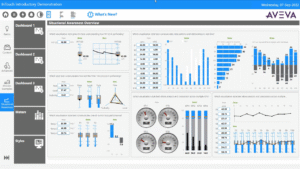Common API Authentication Flaws and How to Avoid Them
API authentication is vital to protect the integrity of your applications and sensitive data. Understanding and addressing common flaws

API authentication plays a crucial role in ensuring the security of applications and data in today’s digital scenario. APIs connect different services, making it essential to protect them from unauthorized access. When APIs are not properly authenticated, they can become a gateway for hackers to steal sensitive information or cause disruptions. This article highlights common API authentication flaws and offers practical solutions to avoid them, helping businesses improve API security.
1. Unauthenticated APIs
Many APIs are left unauthenticated, which makes them vulnerable to unauthorized access. This flaw occurs when no authentication is implemented for APIs, allowing anyone to interact with them freely. The risk of data breaches becomes significant in such cases. Always implement proper API authentication mechanisms, such as OAuth or API keys, to prevent this. These methods ensure only authorized users can access the API, strengthening API security.
2. Weak or Missing Token Validation
Another common flaw is weak or missing token validation. In this case, APIs accept any arbitrary token as valid without proper checks. This can give attackers access to resources they should not be able to reach. To enhance API security, ensure tokens are properly validated by comparing them against a trusted source. This step ensures that only valid tokens are accepted, preventing unauthorized access.
3. Insufficient Authorization Checks
Even with proper authentication, some APIs fail to implement proper authorization checks. This flaw occurs when an API allows an authenticated user to access resources they don’t have permission for. The solution is implementing role-based access control (RBAC) or attribute-based access control (ABAC). These methods ensure that users can only access the resources that their roles permit, improving overall API security.
4. Poor Error Handling
Detailed error messages in APIs can reveal sensitive information, making it easier for attackers to exploit vulnerabilities. When error messages disclose technical details, it provides attackers with clues about the API’s inner workings. To fix this issue, keep error messages generic for external users. This prevents attackers from gaining insights into the API’s structure while allowing developers to debug the system securely.
5. Lack of Rate Limiting
APIs without rate limiting are at risk of being overwhelmed by too many requests. Attackers can exploit this weakness by flooding the API with excessive traffic, leading to service disruption or even a denial-of-service (DoS) attack. Implementing rate limiting ensures that users can only make a certain number of requests in a given time frame. This step is essential in preventing misuse and protecting API security.
Conclusion
API authentication is vital to protect the integrity of your applications and sensitive data. Understanding and addressing common flaws in API authentication and API security can significantly reduce the risk of security breaches. Always validate tokens, implement proper authorization checks, and use effective rate limiting to protect your APIs. By adopting these best practices, businesses can ensure robust API security and provide a secure user experience.




